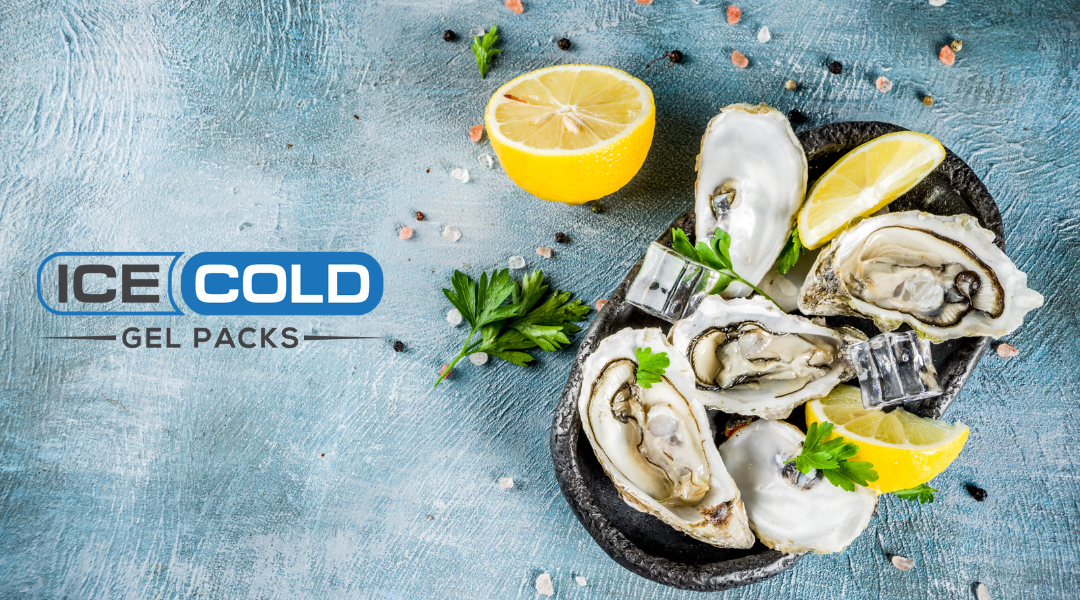Fresh fish and shellfish are an integral part of a healthy diet due to their high-quality protein and other essential nutrients. In fact, a well-balanced diet that includes a variety of fish and shellfish has been shown to contribute to an overall increase in heart health and can also aid in a child’s proper growth and development. Today we will teach you prime fresh handling techniques as well as proper product transportation procedures. As with any food, it's important to handle seafood safely to avoid food-borne illness aka food poisoning. Follow these safe handling tips for buying, preparing, and storing fish and shellfish – and you, your family, and your business can safely enjoy the delicious taste and healthy nutrition of seafood without worry.
Purchasing Frozen Seafood
- Never purchase frozen seafood if the package has been torn, ripped, opened, or if the edges are crushed.
- Look for and avoid packaging that shows signs of frost and ice crystals. This usually means the package has been thawed and refrozen or it has been stored for a long period of time.
- Do not purchase fish that appears thawed or ‘bendable’. The flesh of the fish should be hard.
- Frozen seafood can sometimes spoil during transit due to thawing. Never leave frozen food out in warm temperatures for too long before cooking.
Storing Seafood Properly
- Fresh shellfish and seafood should be stored on fresh, clean ice or refrigerated as soon as possible after purchase.
- Make sure to properly cover your fresh seafood before refrigerating.
- Refrigerated seafood should be prepared and consumed within 48 hours.
- If you are planning on storing your fresh fish for longer than 48 hours be sure to properly cover and store in a freezer.
- When storing fresh fish and seafood, always use a thermometer to check that your fish is stored at the proper temperature.
- ICGP now offers totes of ice at our Los Angeles location! Each tote comes with 1,000 pounds of "flake ice," most commonly used for the re-icing of the following:
- Whole fish
- Salmon
- Tuna
- Vegetables
- Other produce
Shopping For Fresh Fish And Shrimp
- Only Purchase fish and shellfish that is displayed properly in refrigerated cases or on a bed of fresh ice. The case should be properly covered to provide protection from airborne bacteria and insects.
- Fish should never smell “fishy” or ammonia-like, fresh fish stored at the correct temperature should smell mild.
- The color of each particular fish can be affected by several factors including diet, environment, and whether it has been treated with color fixatives such as carbon monoxide. Keep in mind that color isn’t always a proper indicator of the freshness of your fish.
- The flesh of fresh fish should be firm and should “spring back” when pressed firmly. The gills of a fresh fish should be red and odorless.
- Fresh filets should show no signs of discoloration or drying around its edges. The Flesh should display no dark spots.
- Some refrigerated seafood may have a time/temperature indicator on its packaging. This indicator shows whether the product has been stored at the proper temperature. Always check the indicators when they are present and only buy the seafood if the indicator shows that the product is safe to eat.
- The flesh of lobsters, scallops, and shrimp should be a pearly-clear color and have little to no odor.
- “Previously Frozen” fish that is sold as fresh should smell fresh and mild despite lacking some of the characteristics you look for in fresh fish (e.g., red gills, clear eyes, firm flesh). Avoid any fresh fish or shellfish that smells fishy, sour, or rancid.
Safely Preparing Seafood
- Thaw frozen seafood safely by placing it in a clean refrigerator overnight.
- If you have to thaw out your seafood quickly, seal it in a plastic bag and submerge it in cold water that is replaced every 30 minutes until fully thawed.
- Most seafood should be cooked to an internal temperature of 145°F. Be sure to purchase a kitchen thermometer before preparing your fish.
- Undercooked, spoiled seafood can have sour, rancid, fishy, or ammonia-like odors. These odors become stronger after cooking. If you smell sour, rancid, or fishy odors in raw or cooked seafood, do not eat it. If you smell either a fleeting or persistent ammonia odor in cooked seafood, do not eat it.
- When serving your fish, never leave seafood or other perishable food out of the refrigerator for more than 2 hours or for more than 1 hour if exposed to temperatures above 90°F. Bacteria that can cause illness grow quickly at temperatures between 40°F and 140°F.
It's always best to cook seafood thoroughly to minimize the risk of food-borne illness. However, if you choose to eat raw fish anyway, one rule of thumb is to eat fish that has been previously frozen. Some species of fish can contain parasites and freezing will kill any parasites that may be present. However, be aware that freezing doesn't kill all harmful germs. That's why the safest route is to cook your seafood to a safe temperature and always follow healthy guidelines when preparing any perishable foods.
Ice Cold Gel Packs Styrofoam Box is perfect for keeping your perishables ice cold! The 35lb box is most commonly used for transporting and storing fresh or frozen fish. Available now at our Los Angeles and Dallas locations.
Ice Cold Gel Packs are the solution to your cold chain business needs! Whether it's food, pharmaceuticals, liquids, or any other perishable item, our gel packs are here to help you keep cold! Visit our online store today for the coolest packs around.

